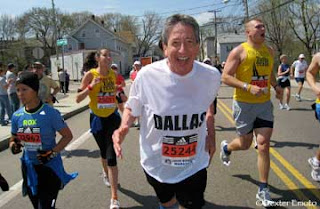 Many of us in the running industry were keeping an eye on attendance figures at road races, notably marathons over the winter months. The big question: would races see a higher than normal no-show rate. Why? The hypothesis I pondered focused on runners’ commitments to their goals set forth in a training regimen that began weeks and months ago: Would runners cut back on travel to running events as the economy worsened?
Many of us in the running industry were keeping an eye on attendance figures at road races, notably marathons over the winter months. The big question: would races see a higher than normal no-show rate. Why? The hypothesis I pondered focused on runners’ commitments to their goals set forth in a training regimen that began weeks and months ago: Would runners cut back on travel to running events as the economy worsened?I first checked the results from the Marine Corps Marathon (
Christmas approached and our sales were ahead of the past two years by 10 runners. We were encouraged. Then January hit and cold weather running dampened many a runners’ spirits. So what did we see? Sales for
 Running takes commitment. Training for marathons takes that commitment a leap further. AMAA and major running events around the
Running takes commitment. Training for marathons takes that commitment a leap further. AMAA and major running events around the The government at the national and state level should take note of the good economic news coming from runners. The message: if you provide an excellent service or product that fulfills the needs and desires of the public they will continue to buy even when their wallets get squeezed.
Just runners making a statement by commitment to lifestyle....
(Photos courtesy of Dexter Emoto)


I was thinking the same thing today about running marathons being recession proof. However, I think there is also an influx of new runners. I think in bad economic times people may want to try to attain new goals in their lives. People now have more time to do those things they have always wanted to try: like running a marathon. I think it speaks of another commitment too. A commitment of the American to work harder and continue to strive and accomplish their goals, no matter what the economic outlook is.
ReplyDeleteAnd yes, I imagine less people will be traveling to far these events. : )